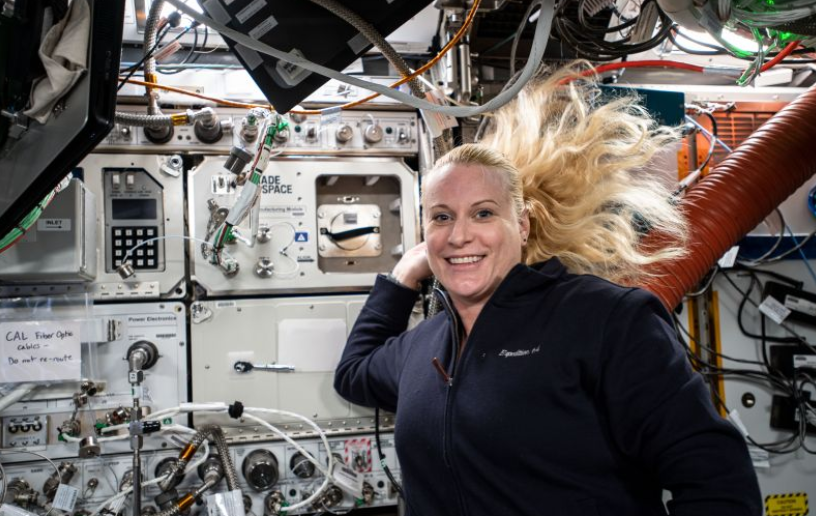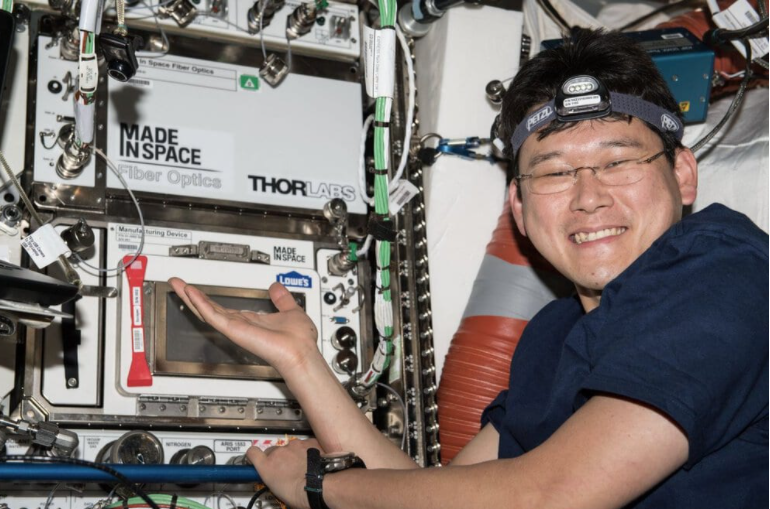
A robust low-Earth orbit (LEO) economy will make space more accessible, spur critical innovation, and support deep space exploration efforts for future generations. In this new space economy, NASA’s exploration objectives and commercial capabilities align to create a sustainable and profitable ecosystem. An ecosystem where NASA is just one of many customers purchasing services and capabilities at competitive costs.
Creating a LEO economy will depend on stimulating demand and broadening commercial utilization. Enabling the development of a sustainable, scalable, and non-NASA demand for LEO services is key.
Advancements in space manufacturing present exciting new opportunities to drive demand for services in LEO beyond research and development initiatives. Space-enabled manufacturing leverages the microgravity environment to produce advanced materials. This is a new realm of manufacturing where high-value goods are produced in space for customers on Earth. Space-enabled manufacturing will be a driver of LEO commercialization, which holds the promise for a space-Earth value chain that supports exploration, delivers advantages for customers, and opens new markets.

Leveraging Microgravity to Produce Space Products for Earth
Exciting commercial innovation and NASA’s commercialization priorities have enabled space manufacturing to evolve beyond 3D printing. These new forms of manufacturing involve completely new processes and the production of high-value materials.
Space-enabled manufacturing takes advantage of microgravity and its effects on materials and manufacturing processes. Materials behave differently in microgravity than they do on Earth. These space-enabled materials are realized through the unique microgravity environment that has the ability to alter materials at their atomic level to create a superior product in-space compared to the terrestrial analog of that material.
By identifying advanced manufacturing processes that address specific markets and add greater value to the products needed in those markets, while developing a scalable approach for meeting the market’s needs, space enabled manufacturing creates a space-Earth value chain to spur commercial activity in LEO. Manufacturing space enabled materials also creates demand for products that can only be made in space, creating a need for space infrastructure to produce these materials.
Space-enabled manufacturing ultimately translates to the growth of new markets and increased demand for terrestrial partners. With continued technological innovation, the availability of the ISS ecosystem, and continued lower launch costs, it is economically viable for space enabled manufacturing to be a profitable new market in LEO. Although it is still expensive to launch material to the ISS and return it to Earth, research shows that revenue projections for making certain products in orbit far exceeds the operational cost of space manufacturing.
Made In Space, Inc. (MIS), a Redwire subsidiary specializing in in-space manufacturing, pioneered space-enabled manufacturing on the ISS through its investigation of ZBLAN optical fiber. Made In Space Fiber Optics (MIS Fiber), a commercially funded miniature fiber pulling machine, has flown four times since 2017 and produces ZBLAN optical fiber aboard the ISS. This ZBLAN fiber produced by MIS Fiber is orders of magnitude better than what can be produced on Earth.

With further iterations, MIS Fiber will be able to produce large, commercially viable amounts of ZBLAN for terrestrial customers. ZBLAN produced in orbit creates a new product offering in the optical fiber industry. This space-Earth value chain built on the demand for the high-quality product is a critical component of the LEO economy.
Expanding on a Legacy of In-Space Manufacturing
Building on its legacy of in-space manufacturing, Redwire is continuing to develop space enabled manufacturing technology to manufacture other advanced, high-value materials beyond ZBLAN.
Redwire has developed three new advanced manufacturing facilities for the ISS. Each of these facilities focuses on a specific material manufacturing process, including ceramic manufacturing, crystal manufacturing, and processing superalloys. These new capabilities will provide superior products to specific addressable terrestrial markets with strong potential revenue forecasts.
On October 2, the Ceramic Manufacturing Module (CMM) launched to the ISS. Once onboard, the facility successfully printed the first ceramic parts ever to be printed on-orbit. Manufacturing ceramic material off-Earth improves the quality of the material, which, in turn, addresses performance challenges that are commonly found in terrestrially printed ceramics. Manufacturing in microgravity can create temperature-resistant ceramic parts that overcome porosity and nonuniformity defects that occur in terrestrial manufacturing.
The Industrial Crystal Facility (ICF), which launched to the ISS in February 2021, manufactures multi-use crystals in microgravity. Due to convection and sedimentation, these optical crystals cannot be grown effectively in a gravity-rich environment such as on Earth. Today’s computer processors are approaching theoretical maximum data transmission capabilities, creating a demand for more efficient data-transmitting materials such as optical crystals.
The Superalloy Casting Facility (TSCM) will leverage on-orbit manufacturing processes to cast superalloy materials with improved properties, such as improved heat and stress resistance, over terrestrially manufactured metal components. TSCM will launch in late 2021.
The near-term, primary objective of these facilities will be to demonstrate that the technology operates as intended and to produce materials to be analyzed on the ground. The development of these new facilities and MIS Fiber enables systematic demonstration of the technology, validation of the products’ efficacy, and optimization of the facilities for commercial output within just a few years.
Critical Drivers of Space Enabled Manufacturing
Space-enabled manufacturing technology, like ICF, is a byproduct of NASA’s dedication to commercializing LEO and developing a robust and sustainable LEO economy. These efforts have seen the ISS flourish as an innovation platform for commercial users.
The research and development happening in orbit is advancing the technology that will bridge the gap between innovation and utilization. The ISS has expanded opportunities for commercial businesses to conduct work on the ISS, providing reliable transportation and on-orbit resources needed for research and development. NASA has also worked with companies to install more than 14 commercial facilities on the station to support research and development initiatives for NASA and the ISS National Lab. This support makes it possible for some innovations to drive successful business models, a key driver for commercializing LEO.
Far-Reaching Benefits for Space Exploration and the Economy
The ecosystem of public-private collaboration aboard the ISS has supported innovation, such as space enabled manufacturing technology, that, if able to continue to iterate, scale, and spur demand, will usher in the sustainable LEO economy NASA envisions.
Space-enabled manufacturing is a key differentiator in how we utilize space, presenting an opportunity to scale on orbit manufacturing processes to support the terrestrial supply chain.
A strong LEO economy will lead to more access to space, more innovation, and new market discovery, providing unprecedented opportunities for launch providers and space technology developers. This would mean lower priced services for customers, including NASA. These lower costs and innovation will translate to more capability for NASA’s exploration and science missions, leading to unprecedented discovery.




